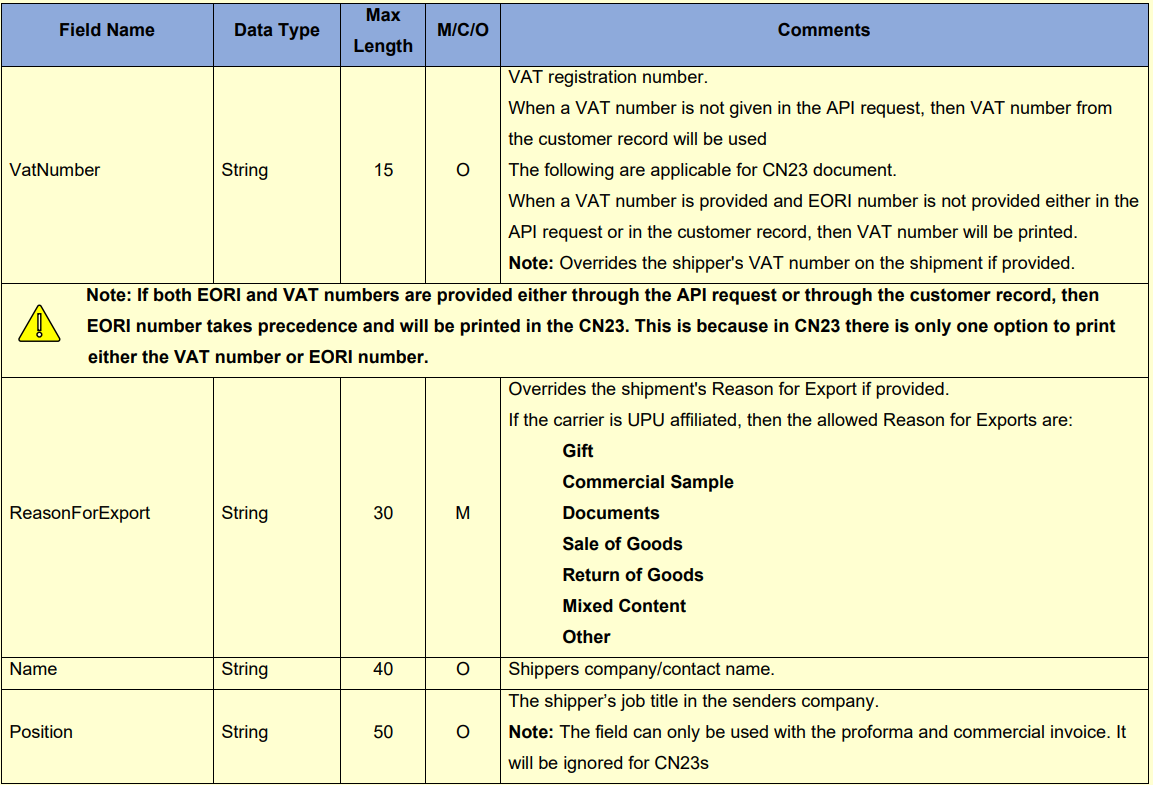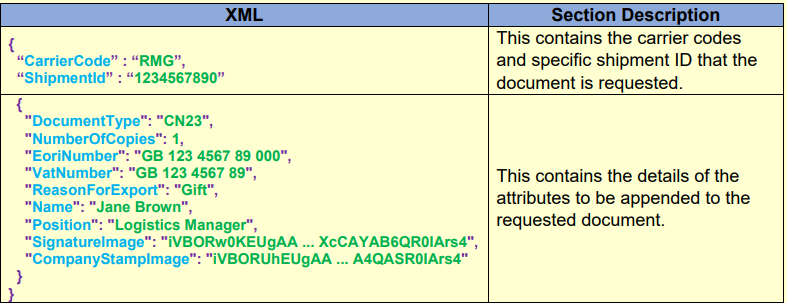JSON Request Structure and Format
The Print Documents request JSON message is comprised of the following sections.
For further details on the standard JSON message formatting, please refer to the Shipping API JSON Formatting Rules.
To successfully process a Print Documents request, the user must have a valid connection, that has been verified by use of a system generated Authentication Token. For further details on system authentication, please refer to the Authentication guide.
This section details the carrier code and shipment ID’s for the shipments that require customs documentation to ben printed.
Within this part of the message, the user needs to send the carrier code and Shipment ID that is to be used for the print document request. This then tells the receiving system that it is going to receive details of a carrier and shipment id for a print document request. The system can thereby validate the data contained in this section accordingly.
The fields, data types and conditions that will be validated for in the Carrier Codes section as detailed below.

This section contains the details of the shipment, the reason for the shipment, the EORI number of the sender and other exporter information that is required by HMRC.
Within the Print Document Request element of the message, the user needs to send the mandatory customs information, so that the relevant information can be returned within the CN23 customs declaration form. This can thereby by validated to ensure the data contained in this section has been completed correctly.
The fields, data types and conditions that will be validated for in the shipment section as detailed below.



Example Request JSON:
Below is a Service Availability Request XML example, this has been placed into a table, to better separate and distinguish the different sections detailed above.

Updated 9 months ago